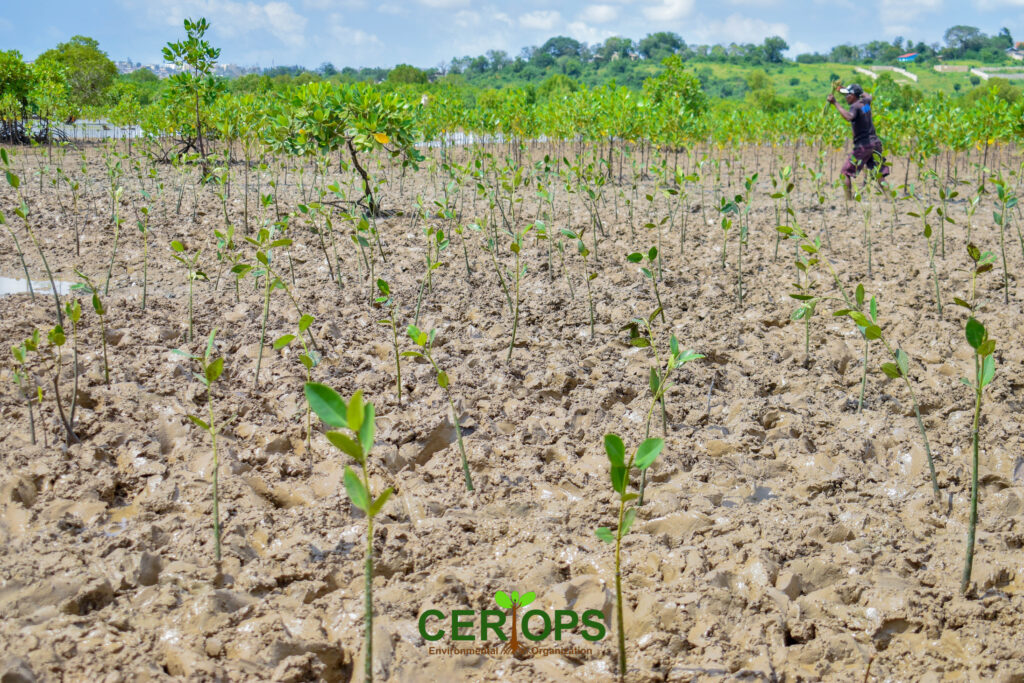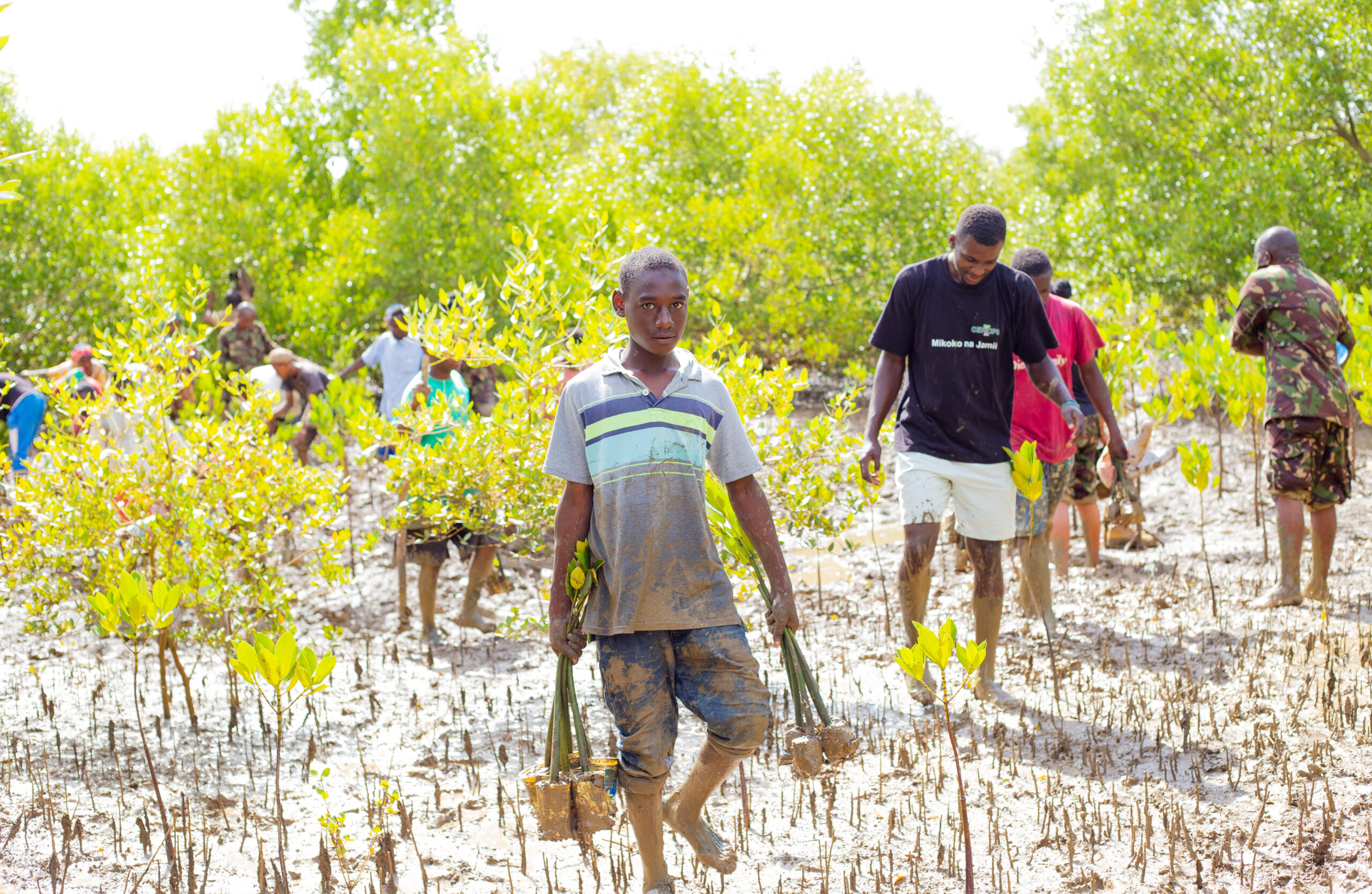Welcome to another episode of “What’s That Green?”, the podcast dedicated to bringing nature back into our cities and inspiring positive change. In today’s episode, we are thrilled to have Eugiene Ambaka, a marine scientist and sustainability expert, who is leading a significant mangrove conservation project along the Kenyan coast. Eugiene and his team at Ceriops Environmental Organization are dedicated to protecting and restoring these critical ecosystems.
Why do mangroves matter?
Mangroves play a crucial role in supporting biodiversity, acting as carbon sinks, and protecting coastal areas from erosion and extreme weather events. They also provide economic benefits to local communities through fisheries, timber, and tourism.
“Mangroves are key ecosystems to coastal communities. They are a source of their livelihood and support an array of biodiversity across both coastal and marine ecosystems.”

The scope of the project
Ceriops project is working on the conservation and restoration of peri-urban mangrove ecosystems along the Kenyan coast. The project’s goal is multifaceted, involving:
- Protection and restoration: Safeguarding existing mangrove forests, restoring degraded areas, and promoting sustainable management practices.
- Research and assessment: Conducting comprehensive studies to understand the ecological importance of mangroves, including their role in carbon sequestration, biodiversity conservation, and coastal protection.
- Community engagement and capacity building: Raising awareness among local communities about the importance of mangrove conservation, providing training, and introducing alternative livelihood options like ecotourism and sustainable aquaculture.
- Policy advocacy and stakeholder engagement: Working with various stakeholders to ensure a collective effort in conservation.
- Monitoring and evaluation: Tracking changes in mangrove cover, biodiversity, and ecosystem health to assess the effectiveness of conservation interventions and adapt strategies as needed.

Challenges and solutions
Mangroves in peri-urban areas face unique challenges, including issues related to land tenure, urban development pressures, pollution, invasive species, human disturbance, and climate change vulnerability. Despite these challenges, Eugiene believes that urban mangroves present an opportunity for restoration and conservation.
“Urban areas often have people more aware and engaged in conservation, emphasizing the potential for positive change.”
To tackle these challenges, the project employs several strategies:
- Adopt-a-site model: This initiative allows individuals, groups, or organizations to take responsibility for maintaining and improving specific mangrove sites. “Communities are the soul of the restoration activities. These partnerships provide funding, technical expertise, and resources for restoration activities.”
- Community Involvement: Engaging local communities ensures support and sustainability. The project includes training and capacity-building programs to upskill communities in effective mangrove restoration and management.
- Monitoring and Evaluation: Regular monitoring helps track progress and adapt to any changes. The team provides detailed reports to donors and collaborators, ensuring transparency and accountability.
Join the movement
Whether you’re in Kenya or halfway around the world, you can participate in this inspiring project. By adopting a site, you contribute to the restoration of these vital ecosystems. For those interested in supporting this initiative, detailed information is available on Ceriops’ website. Together, we can make a significant impact on mangrove conservation and help protect these invaluable ecosystems for future generations.
Mangrove conservation in Kenya is more than just an environmental project; it’s a lifeline for coastal communities and a beacon of hope in the fight against climate change. Eugiene Ambaka and the Ceriops team are leading the way with their comprehensive approach, community engagement, and innovative models like Adopt-a-Site. Join us in this vital mission to restore and protect mangroves, ensuring a resilient and sustainable future for our coastal ecosystems.
- Host and Editor: Fanny Téoule
- Guest: Eugiene Ambaka, Ceriops
- Music composer: Jenny Nedosekina
- Graphic designer: Julia Micklewright